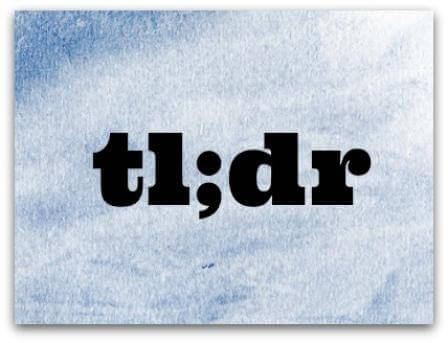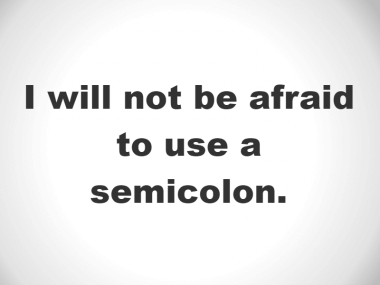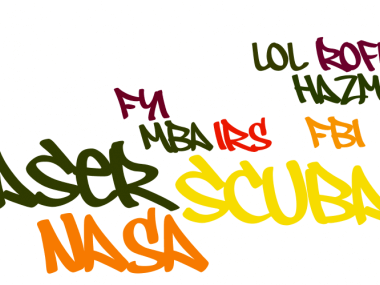Is the Semicolon in tl;dr Ironic?
The semicolon in tl;dr is a little joke you may have missed.
I’ve been seeing the abbreviation tl;dr a lot lately. It stands for “too long; didn’t read.” Snotty commenters post it in response to Internet articles they deem unworthy of their time, and sometimes people use it to introduce a summary of a longer article:
tl;dr: Grammar Girl thinks the semicolon in tl;dr is ironic.
Seth Godin recently wrote a blog post titled “Trapped by tl;dr” (note the semicolon) and On the Media has a new podcast spinoff called TLDR (note the lack of a semicolon).
The Urban Dictionary has entries for both TLDR and tl;dr, TLDR showed up in January of 2003, and tl;dr soon followed in November of 2003. I see the abbreviation as often with the semicolon as without, and it recently struck me that the semicolon is ironic. Here’s why:
Abbreviations Usually Don’t Include Punctuation
Semicolons appear in long, complex sentences—they’re a hallmark of writing that would likely earn the tl;dr label. I can’t think of another acronym or initialism that includes a semicolon (or any other punctuation mark), so whoever included the first semicolon in tl;dr was bucking abbreviation conventions. He or she took an abbreviation meant to endorse brevity and made it longer and more complex by adding a semicolon.
Why the Semicolon is Ironic
Some people have speculated that programmers put the semicolon there because some programming languages end lines with semicolons. Others have pointed out that using the semicolon is grammatically correct because if you were to write tl;dr as a sentence, it is two clauses that could be properly joined by a semicolon. But, if you view the semicolon as a symbol of long, perhaps pedantic writing, it would be funny to include the semicolon in the barb you’re directing at writers of such works—ironic because it’s the opposite of what you would expect in an abbreviation.
The Semicolon Could Be “Enjoyably Clunky”
I asked PJ Vogt of the TLDR podcast why they chose not to include the semicolon in their show name. By e-mail, he said, “It feels silly to put a semicolon in an acronym, and particularly silly to put a semicolon in an acronym which is supposed to serve the forces of brevity and clarity. I think a semicolon detracts from both of those.”
As with me, it had never occurred to Vogt that the semicolon could be ironic before. “I really love that idea . . . I’m kind of tempted to start calling our show ’T-L-semicolon-D-R’ on air, because I think that that would be enjoyably clunky.”
[Added June 7, 2014: Since some people have questioned whether irony is the right word, here is a video I did a few years about what makes things ironic.]
Do you put the semicolon in tl;dr or leave it out? Whatever you do, is it a conscious decision? I’d love to know!
Note: This podcast originally appeared as a Grammar Girl blog post January 22, 2014 and was rereleased as an audio podcast on July 3, 2014.







